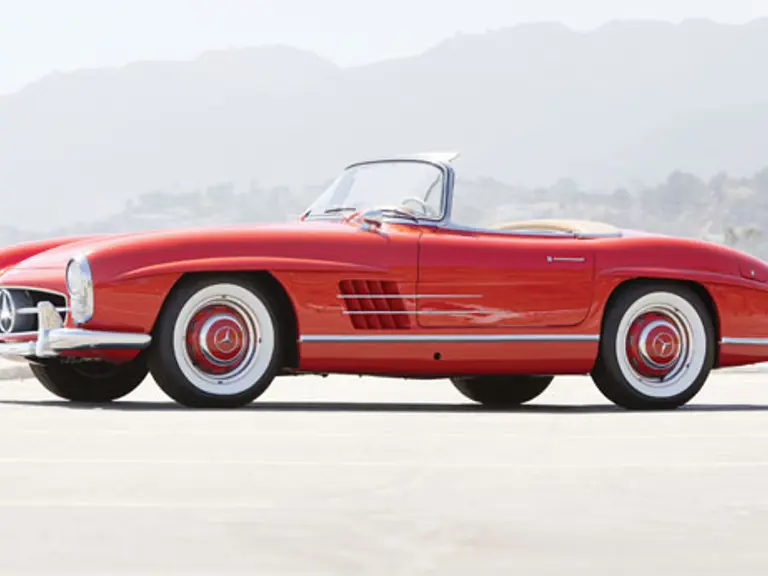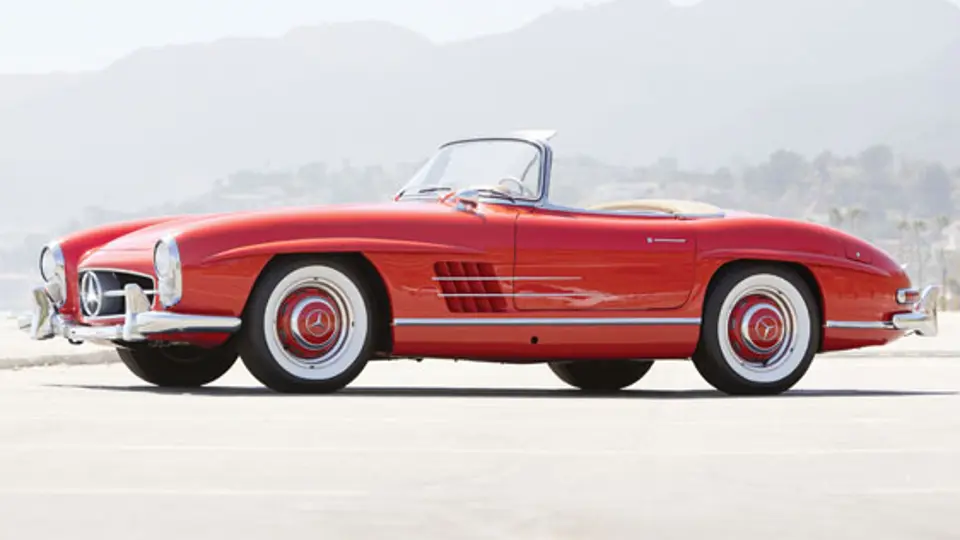The Gullwing coupe, launched in 1954 for public consumption, is largely responsible for the performance image Mercedes-Benz enjoys today. The legendary 300SL was conceived as a high performance street machine with a thinly veiled racing history and every facet of the car lived up to that expectation. It was fast, solid, handled well, and it quickly developed an enviable reputation both on the track and in the streets.
By 1957, the Gullwing coupe was no longer competitive in sports car racing. As a result, Mercedes-Benz’ North American distributor, Max Hoffman, thought the best way to satisfy the American appetite for open air motoring was to offer a convertible. As a result of his efforts, 1957 saw Mercedes-Benz replace the Gullwing coupe with a well-designed and engineered roadster.
When it was introduced at the Geneva Motor Show Daimler-Benz proudly stated, “The 300SL roadster is our response to the demand in many countries for a particularly fast, comfortable, open sports car. This automobile offers a wide range of technical achievements for even greater driving safety and motoring comfort as well as a high standard of practical everyday value for touring in real style.”
As the roadster was based on the coupe there were many similarities between the two; the roadster encompassing a few changes that were to increase the cars desirability. The roadster had styling cues that had changed only slightly. Larger fenders, different headlights, a smaller grille, and a chrome strip down the side of the car further distinguished it from the coupe.
Since the 300SL Roadster lacked the strength and rigidity offered by the coupe's roof, Mercedes-Benz engineers had to redesign the car’s chassis in order to maintain its structural integrity. As a consequence of the modifications, the roadster was a slightly heavier automobile, yet the engineers were able to offer the car with an additional 20 horsepower over the coupe, which helped to offset the difference in weight. They were able to increase the power by including a sports camshaft as standard and raising the compression ratio. The aerodynamics of the roadster were not as favorable as the coupe, but the roadster could still nudge 155-mph with the right gearing, and it was still one of the fastest road cars in the world.
At a time when most sports cars were flimsy, handmade affairs, the 300SL felt as if it was carved from a solid block. Where others had quirky styling, the 300SL Roadster was beautiful from any angle. When others had carburetors, solid rear axles and pushrod engines, the 300SL offered fuel injection, independent rear suspension and an overhead camshaft.
Finished in the iconic color combination of red over tan with a tan top, this Roadster looks exceptional. A thorough restoration has been completed on the car and it is in remarkable condition. The surface of the red paint is nearly flawless and there are no road chips at all on the car. Overall, this Roadster presents very well and the odometer reads only 44,209 miles. All of the chrome has been re-plated and shows no signs of pitting or damage. Importantly, the original 3-liter straight six-cylinder engine and transmission that were fitted in the car new are still in the vehicle and work perfectly. All of the original books including the owner’s manual, 300SL workshop manual, supplement to workshop manual, complete 300SL spare parts catalogue, and spare parts list are included in the sale. The factory tool roll and jack are also included. This is a running and driving example that turns heads everywhere it goes and is a great example of the legendary 300SL Roadster. It is the perfect 300SL to enjoy on weekends and is ready to be for many more years of use.



 | Santa Monica, California
| Santa Monica, California


